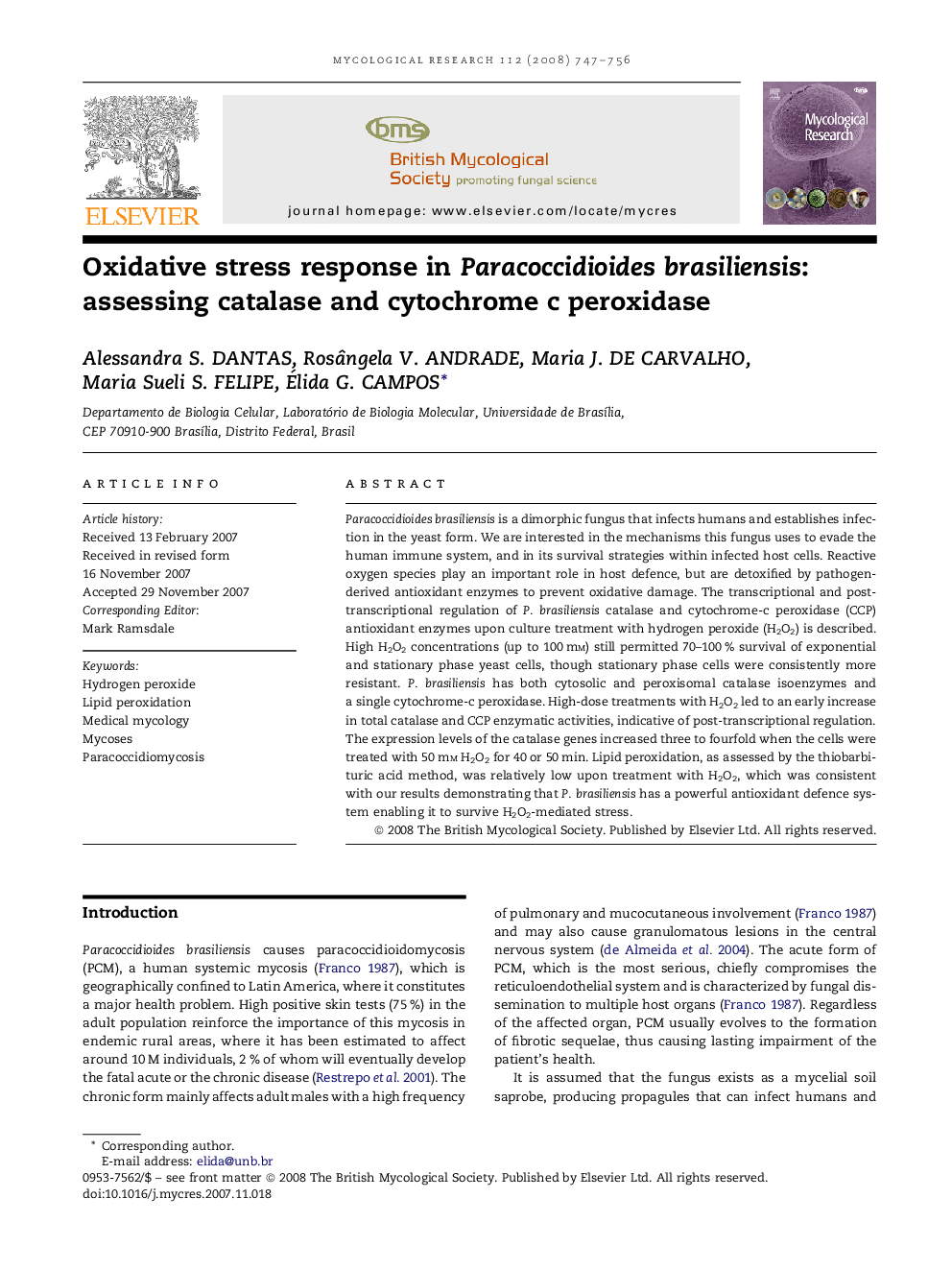| Article ID | Journal | Published Year | Pages | File Type |
|---|---|---|---|---|
| 4357786 | Mycological Research | 2008 | 10 Pages |
Paracoccidioides brasiliensis is a dimorphic fungus that infects humans and establishes infection in the yeast form. We are interested in the mechanisms this fungus uses to evade the human immune system, and in its survival strategies within infected host cells. Reactive oxygen species play an important role in host defence, but are detoxified by pathogen-derived antioxidant enzymes to prevent oxidative damage. The transcriptional and post-transcriptional regulation of P. brasiliensis catalase and cytochrome-c peroxidase (CCP) antioxidant enzymes upon culture treatment with hydrogen peroxide (H2O2) is described. High H2O2 concentrations (up to 100 mm) still permitted 70–100 % survival of exponential and stationary phase yeast cells, though stationary phase cells were consistently more resistant. P. brasiliensis has both cytosolic and peroxisomal catalase isoenzymes and a single cytochrome-c peroxidase. High-dose treatments with H2O2 led to an early increase in total catalase and CCP enzymatic activities, indicative of post-transcriptional regulation. The expression levels of the catalase genes increased three to fourfold when the cells were treated with 50 mm H2O2 for 40 or 50 min. Lipid peroxidation, as assessed by the thiobarbituric acid method, was relatively low upon treatment with H2O2, which was consistent with our results demonstrating that P. brasiliensis has a powerful antioxidant defence system enabling it to survive H2O2-mediated stress.
